Microbial Art Shows How Bacteria Became The Most Successful Organism On Earth




Microbial art shows how bacteria became the most successful organism on Earth
In an attempt to unravel bacteria’s remarkable adaptive abilities, the late UC San Diego theoretical physicist and chemist Eshel Ben-Jacobs also stumbled upon a new form of art.
Ben-Jacobs grew species of bacteria in his lab and exposed them to stresses such as temperature changes, antibiotics and food scarcity in an effort to understand how they behave and cope under different environmental conditions.
What resulted were formations that indicate the different ways bacterial colonies communicate, react and make decisions about where to expand in a petri dish.
While the colors are his artistic addition, “the strikingly beautiful organization of the pattern reflects the underlying social intelligence of the bacteria,” said Ben-Jacobs.
Take a look at his gallery of microbial art
More Posts from Llamaslikesciencetoo and Others
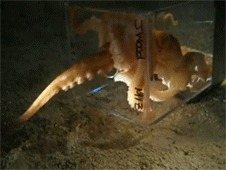
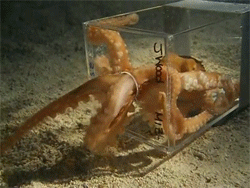




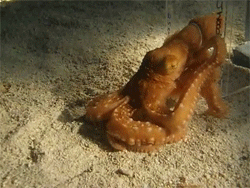
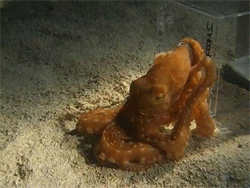
Earth Expeditions Preview
A Closer Look at Our Home Planet

Our view from space shows our planet is changing, but to really understand the details of these changes and what they mean for our future, scientists need a closer look. Over the next six months, we’re taking you on a world tour as we kick off major new field research campaigns to study regions of critical change from land, sea and air.
You can follow the Earth Expeditions on Facebook, Twitter and their Blog.
Take a look at the eight campaigns we will explore:
CORAL (Coral Reef Airborne Laboratory)

This three-year CORAL mission will use advanced airborne instruments and in-water measurements to survey a portion of the world’s coral reefs. The mission will assess the conditions of these threatened ecosystems to better understand their relation to the environment, including physical, chemical and human factors. With a new understanding of reef condition, the future of this global ecosystem can be predicted.
OMG (Oceans Melting Greenland)

Oceans Melting Greenland (OMG) mission will pave the way for improved estimates of sea level rise by addressing the question: To what extent are the oceans melting Greenland’s ice from below? This mission will observe changing water temperatures and glaciers that reach the ocean around all of Greenland from 2015 to 2020. This year, the OMG mission will fly over the periphery of Greenland to take measurements of the heights and extents of Greenland’s coastal glaciers that reach the ocean and release expendable sensors to measure the temperature and salinity of coastal waters. The OMG field campaign will gather data that will help scientists both understand how the oceans are joining with the atmosphere in melting the vast ice sheet and to predict the extent and timing of the resulting sea level rise.
NAAMES (North Atlantic Aerosols and Marine Ecosystems Study)

About half the carbon dioxide emitted into Earth’s atmosphere each year ends up in the ocean, and plankton absorb a lot of it. The NAAMES mission studies the world’s largest plankton bloom and how it gives rise to small organic particles that leave the ocean and end up in the atmosphere, ultimately influencing clouds and climate. This mission will be taking measurements from both ship and aircraft in the North Atlantic.
KORUS-AQ (Korea U.S.-Air Quality)

Air quality is a significant environmental concern around the world. Scientists are developing new ways to untangle the different factors that contribute to poor air quality. KORUS-AQ is a joint field study between NASA and the Republic of Korea to advance the ability to monitor air pollution from space. The campaign will assess air quality across urban, rural and coastal South Korea using observations from aircraft, ground sites, ships and satellites to test air quality models and remote sensing methods. Findings from this study will help develop observing systems using models and data to improve air quality assessments for decision makers.
ABoVE (Arctic Boreal Vulnerability Experiment)

The ABoVE mission covers 2.5 million square miles of tundra, forests, permafrost and lakes in Alaska and Northwestern Canada. Scientists from the mission are using satellites and aircraft to study this formidable terrain as it changes in a warming climate. Teams of researchers will also go out into the field to gather additional data. The mission will investigate questions about the role of climate in wildfires, thawing permafrost, wildlife migration habits, insect outbreaks and more.
ATom (Atmospheric Tomography)

The ATom mission takes flight through Earth’s atmosphere to understand how short-lived greenhouse gases like ozone and methane contribute to climate change. In late July through August 2016, a suite of instruments aboard our DC-8 flying laboratory will be hopping down the Pacific Ocean from Alaska to the southern tip of South America. It will then travel north up the Atlantic to Greenland to measure more than 200 gases and particles in the air and their interactions all around the world.
ORACLES (Observations of Clouds above Aerosols and their Interactions)

Southern Africa produces almost a third of the world’s vegetative burning, which sends smoke particles up into the atmosphere, where they eventually mix with stratocumulus clouds over the southeastern Atlantic Ocean. Little is known about how these particles impact the clouds, which play a key role in both regional and global surface temperatures and precipitation. The ORACLES mission is a five-year ground and air campaign aimed at better understanding their interactions and improve on current climate models.
ACT-America (Atmospheric Carbon and Transport – America)

The ACT-America mission will conduct five airborne campaigns across three regions in the eastern United States to study the transport of atmospheric carbon. This region serves as an ideal study area for its productive biosphere, agricultural activity, gas and oil extraction and consumption, dynamic seasonally varying weather patterns and the most extensive carbon cycle and meteorological observing networks on Earth. Using space borne, airborne and ground-based measurements, this mission will enable more accurate and precise estimates for climate management and prediction by studying sources and sinks of greenhouse gases, which act as a thermal blanket for Earth.
Remember to follow the Earth Expeditions on Facebook, Twitter and their Blog.
Make sure to follow us on Tumblr for your regular dose of space: http://nasa.tumblr.com










The naturalists’ miscellany : or Coloured figures of natural objects; drawn and described immediately from nature.
By Shaw, George, 1751-1813
Nodder, Elizabeth
Nodder, Frederick Polydore,
Publication info London :Printed for Nodder & co,1789.
Contributing Library: Museum Victoria
BioDiv Library

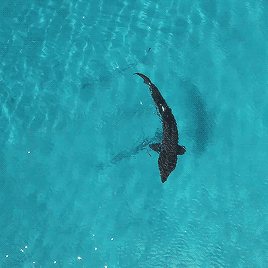
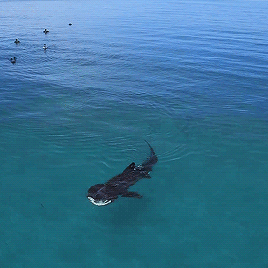
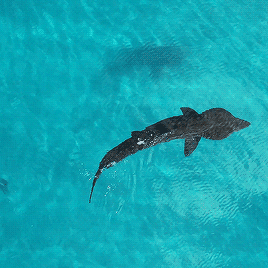
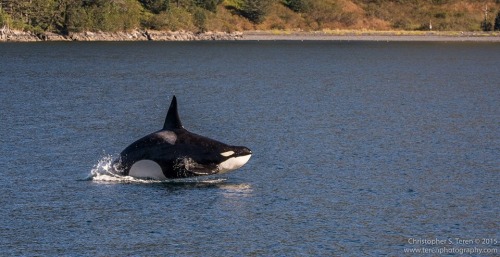
Breathtaking photo of a very special whale—AT6 Egagutak!
This photo was taken by Teren Photography yesterday (September 19th) in Aialik Bay. Egagutak is one of the 7 remaining AT1 transients. He, unlike the other AT1s, travels alone. To see this whale at all is a blessing. He’s truly one of a kind, and every sighting of him is a gift.

Mildred Dresselhaus, a professor emerita at the Massachusetts Institute of Technology whose research into the fundamental properties of carbon helped transform it into the superstar of modern materials science and the nanotechnology industry, died on Monday in Cambridge, Mass. She was 86.
Her death, at Mount Auburn Hospital, was confirmed by her granddaughter Leora Cooper. No cause was given.
Nicknamed the Queen of Carbon in scientific circles, Dr. Dresselhaus was renowned for her efforts to promote the cause of women in science. She was the first woman to secure a full professorship at M.I.T., in 1968, and she worked vigorously to ensure that she would not be the last.
In 1971, she and a colleague organized the first Women’s Forum at M.I.T. to explore the roles of women in science. Two years later she won a Carnegie Foundation grant to further that cause.
“I met Millie on my interview for a faculty job in 1984,” said Lorna Gibson, now a professor of materials science and engineering. “M.I.T. was quite intimidating then for a new female, but Millie made it all seem possible, even effortless. I knew it wouldn’t be, but she was such an approachable intellectual powerhouse, she made it seem that way.”
[…]
Dr. Dresselhaus used resonant magnetic fields and lasers to map out the electronic energy structure of carbon. She investigated the traits that emerge when carbon is interwoven with other materials: Stitch in some alkali metals, for example, and carbon can become a superconductor, in which an electric current meets virtually no resistance.
Dr. Dresselhaus was a pioneer in research on fullerenes, also called buckyballs: soccer-ball-shaped cages of carbon atoms that can be used as drug delivery devices, lubricants, filters and catalysts.
She conceived the idea of rolling a single-layer sheet of carbon atoms into a hollow tube, a notion eventually realized as the nanotube — a versatile structure with the strength of steel but just one ten-thousandth the width of a human hair.
She worked on carbon ribbons, semiconductors, nonplanar monolayers of molybdenum sulfide, and the scattering and vibrational effects of tiny particles introduced into ultrathin wires.
She published more than 1,700 scientific papers, co-wrote eight books and gathered a stack of accolades as fat as a nanotube is fine.
Dr. Dresselhaus was awarded the National Medal of Science, the Presidential Medal of Freedom (bestowed by President Barack Obama), the Kavli Prize in Nanoscience, the Enrico Fermi prize and dozens of honorary doctorates. She also served as president of the American Physical Society and the American Association for the Advancement of Science and worked in the Department of Energy in the Clinton administration.
Continue Reading.

One million full length movies are stored in this vial using DNA as storage media. We’re through the looking glass people. The future is now.
SeaWorld Can Extend Tilikum's Legacy Beyond the Show Pool
Monday, March 14, 2016
http://voiceoftheorcas.blogspot.com/2016/03/seaworld-can-extend-tilikums-legacy.html
To Whom It May Concern:
Myself, and the other members of VOTO, Samantha Berg, John Jett, and Carol Ray, have been informed that Tilikum, a SeaWorld killer whale in Orlando, is near death. We are saddened by this announcement, although it is not unexpected.
Tilikum has developed an antibiotic resistant bacterial infection of the lungs, with pneumonia being the leading reported cause of captive killer whale mortality. Efforts to treat Tilikum have failed due to decades of antibiotic and antifungal therapy, medications that three-of-us at VOTO have fed him, and medications he was on in 2010 when he killed Dawn Brancheau, as reported by
APHIS, here
Tilikum has been getting fed antibiotics consistently for at least two decades, primarily because of his badly damaged teeth, including open bore holes that must be flushed with antiseptic solution 2-3 times daily. These bore holes can lead to fish particles, roe, and other debris getting into the jaw and eventually into his blood stream, causing chronic low grade infection(s), and able to seed various organs, including the lungs. The end result is that, now, Tilikum is filled with bacteria that are resistant to powerful and broad spectrum medications that SeaWorld is dosing him with.
Tilikum is, at this time, likely suffering from pulmonary edema, or excess fluid in his lungs. When the surface area of his alveoli diminishes sufficiently, he will suffocate in a stretcher, at SeaWorld. In a last ditch effort to obtain air to oxygenate his tissues, he will likely thrash in the stretcher, and go through a period of “death throes,” prior to finally passing. This is a particularly dangerous time for the animal care and training staff on hand.
A crane is reportedly standing by, possibly to recover his body if he should pass. This information is unconfirmed, but it does correspond with SeaWorld’s recent announcements seen in this video:
Many citizens, including some in the scientific community, are hopeful that SeaWorld will dedicate Tilikum’s cadaver to science. This gesture would advance our understanding of the impact of captivity on marine mammals such as Tilikum.
Histological samples of dorsal fin collagen would help us understand collagen fibrillogenesis in killer whales, and why dorsal fins collapse in captivity. Kidney tissue samples could help us understand the effects of chronic dehydration on orcas, like Tilikum, who require gelatin as a dietary supplement. Cardiac tissue could be examined for evidence of physical deconditioning. Eye tissue could be used to understand the effects of looking upward toward trainers, a behavior that is probably contributory to early cataract formation in show animals that must look for hand signals from trainers, on stage. Blood tissue can be used to test for elevated titers of viruses such as West Nile, St Louis encephalitis, and other mosquito transmitted “bugs” associated with zoos, but not seen in wild animals. Immunoglobulin levels could provide information on captive orca immunity. Detailed bone and joint examinations could be examined for evidence of various arthritides. DNA testing could help identify Tilikum’s natal pod, and so on.
Take the NFL as an example
Samples of brain tissue were critical in understanding the newly described condition (seen in NFL players) known as
Chronic Traumatic Encephalopaty (CTE)
and as depicted in the feature film “Concussion,” with Will Smith. The NFL was initially resistant to outside scientists performing these studies, but is now helping to fund them. SeaWorld can mimic the NFL, and CEO Joel Manby can get credit for the change, something that might give him some job security.
Killer whales in captivity are also known to slam their heads on solid objects such as gates and concrete walls, especially adult male killer whales, with Kanduke being a famous example. Tilikum’s brain tissue, or perhaps a new MRI, as depicted in Blackfish, could push our understanding of the orca brain forward, a brain four times larger than our own.
SeaWorld has an opportunity to extend Tilikum’s legacy beyond the performance pool and to substantiate it’s claims of performing relevant science. We are hopeful they will take up this idea for the benefit of science, the public, policy makers, whale lovers, and for future killer whales.
Thank you, Tilikum, for your sacrifices. Your legacy will live on through us and the millions of people your story has touched.
Jeffrey Ventre MD
Blackfish cast member

Via National Geographic:
Finally, You Can See Dinosaurs in All Their Feathered Glory
At first glance, it may be hard to see how the ducks you feed, the pigeons you dodge, or the peacocks you admire have anything in common with the “terrible lizards” portrayed in iconic dinosaur movies such as Jurassic Park.
But many scientists now believe that modern birds are living dinosaurs. Specifically, a group of two-legged carnivorous dinosaurs called theropods seems to have evaded the great dino extinction event 65 million years ago by developing feathers, bigger and more adaptable brains, and smaller, more airborne forms.
“It’s important that people understand dinosaurs are still among us,” says Mark Norell, chair of paleontology at the American Museum of Natural History in New York. “They’re represented by at least 13,000 species alive today.”
Norell has curated the new exhibit Dinosaurs Among Us, which opened on March 18, that maps out the evolutionary history of birds while challenging the popular perception of dinosaurs as green, scaly lizards.
Read the full story.

Snowshoe hares’ traditional habitat in Wisconsin may not be white enough to provide the animals with cover as the climate changes.
“The snowshoe hare is perfectly modeled for life on snow,” said Jonathan Pauli, a professor of forest and wildlife ecology at the University of Wisconsin-Madison and a coauthor of a study recently published in Proceedings of the Royal Society B, in a release. “They’re adapted to glide on top of the snow and to blend in with the historical colors of the landscape.”
The snow is vital for snowshoe hares (Lepus americanus), who rely on it for camouflage from predators. But snow is becoming less common in the southern range of their habitat in Wisconsin…
photo by Gordon E. Robertson
-
 dorisocampo liked this · 6 years ago
dorisocampo liked this · 6 years ago -
 jessicadostie liked this · 6 years ago
jessicadostie liked this · 6 years ago -
 theycallmekidcancer reblogged this · 6 years ago
theycallmekidcancer reblogged this · 6 years ago -
 analgesicsleep reblogged this · 6 years ago
analgesicsleep reblogged this · 6 years ago -
 launeae reblogged this · 7 years ago
launeae reblogged this · 7 years ago -
 tylerklinkoooo liked this · 7 years ago
tylerklinkoooo liked this · 7 years ago -
 ourendlesswinter reblogged this · 7 years ago
ourendlesswinter reblogged this · 7 years ago -
 theory-witch-ferlu reblogged this · 7 years ago
theory-witch-ferlu reblogged this · 7 years ago -
 thesunistobright reblogged this · 7 years ago
thesunistobright reblogged this · 7 years ago -
 mysteriousdeltarays reblogged this · 7 years ago
mysteriousdeltarays reblogged this · 7 years ago -
 mysteriousdeltarays liked this · 7 years ago
mysteriousdeltarays liked this · 7 years ago -
 bangyourdream liked this · 7 years ago
bangyourdream liked this · 7 years ago -
 geogonzo liked this · 7 years ago
geogonzo liked this · 7 years ago -
 rachel009 liked this · 7 years ago
rachel009 liked this · 7 years ago -
 rachel009 reblogged this · 7 years ago
rachel009 reblogged this · 7 years ago -
 alimarko liked this · 7 years ago
alimarko liked this · 7 years ago -
 batappa reblogged this · 7 years ago
batappa reblogged this · 7 years ago -
 geneawillhidee liked this · 7 years ago
geneawillhidee liked this · 7 years ago -
 raziyex-blog liked this · 7 years ago
raziyex-blog liked this · 7 years ago -
 tomebamba reblogged this · 7 years ago
tomebamba reblogged this · 7 years ago -
 r41nbowrumpuspartytown liked this · 7 years ago
r41nbowrumpuspartytown liked this · 7 years ago -
 apiolock reblogged this · 7 years ago
apiolock reblogged this · 7 years ago -
 sco-fi reblogged this · 7 years ago
sco-fi reblogged this · 7 years ago -
 kelseylorene liked this · 8 years ago
kelseylorene liked this · 8 years ago -
 whalesandcraftbeers reblogged this · 8 years ago
whalesandcraftbeers reblogged this · 8 years ago -
 flying-lemons reblogged this · 8 years ago
flying-lemons reblogged this · 8 years ago -
 sarahstudycorner-blog reblogged this · 8 years ago
sarahstudycorner-blog reblogged this · 8 years ago -
 writeitinsharpie reblogged this · 8 years ago
writeitinsharpie reblogged this · 8 years ago -
 writeitinsharpie liked this · 8 years ago
writeitinsharpie liked this · 8 years ago -
 jackalyte reblogged this · 8 years ago
jackalyte reblogged this · 8 years ago -
 sarahyatzee reblogged this · 8 years ago
sarahyatzee reblogged this · 8 years ago -
 sarahyatzee liked this · 8 years ago
sarahyatzee liked this · 8 years ago -
 condemn3d reblogged this · 8 years ago
condemn3d reblogged this · 8 years ago
Mainly interested in ecology, but also the entirety of science.
179 posts